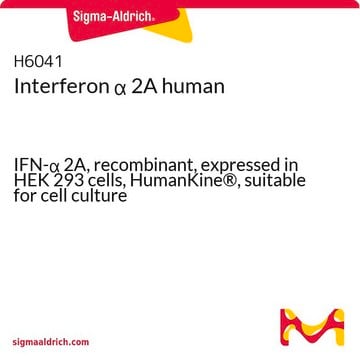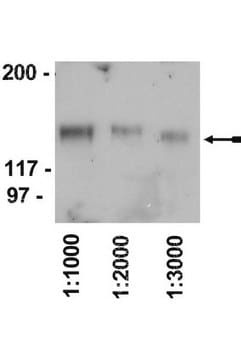TR-1001
GPT Selection Reagent, 500X Mycophenolic Acid; 100X Aminopterin
The Mycophenolic Acid is an antibiotic useful in research for the selection of animal cells that express the E. coli.
Synonim(y):
MPA & Aminopterin solution
About This Item
Polecane produkty
Poziom jakości
Formularz
liquid
producent / nazwa handlowa
Specialty Media
moc wejściowa
sample type: mouse embryonic stem cell(s)
Warunki transportu
dry ice
Opis ogólny
Cells transfected with the E. coli GPT gene can be selected for growth in medium containing GPT Selection Reagent.
Each Kit Contains:
• 500X Mycophenolic Acid containing ETOH (12.5mg/mL) 2 x 1mL vials
• 1 bottle (10mL) of 100X Aminopterin solution which consists of:
- xanthine 25 mg/mL
- hypoxanthine: 1.5 mg/mL
- aminopterin: 0.2mg/mL
- thymidine: 1 mg/mL
- in 0.08M NaOH
Zastosowanie
2. Transfect the culture with 10-20 μg of the plasmid-EcoGPT DNA.
3. After 3 days at 37°C in DMEM containing 5% fetal calf serum, trypsinize the cell monolayers and disperse 5 x 105 cells on fresh 100 mm culture plates in DMEM containing 10% dialyzed fetal calf serum supplemented with the MPA and Aminopterin solutions. This will give a final solution of approximately: 250 μg/mL xanthine, 15 μg/mL hypoxantine, 10 μg/mL thymidine, 2 μg/mL aminopterin, and 25 μg/mL mycophenolic acid. Dialyzed serum is used to speed the selection process. Selection will be slower with undialyzed serum.
4. Twenty-four hours later, replace the medium with fresh medium containing the same supplements, and fluid change.
5. Repeat every 3 days. Colonies are visible in 7-10 days, typically.
Note: Other media bases can also be used such as Ham′s F12. Much depends upon the cell type being used.
Przechowywanie i stabilność
Oświadczenie o zrzeczeniu się odpowiedzialności
Hasło ostrzegawcze
Danger
Zwroty wskazujące rodzaj zagrożenia
Zwroty wskazujące środki ostrożności
Klasyfikacja zagrożeń
Aquatic Chronic 2 - Muta. 2 - Repr. 1B - STOT RE 2 Oral
Organy docelowe
Immune system
Kod klasy składowania
6.1D - Non-combustible, acute toxic Cat.3 / toxic hazardous materials or hazardous materials causing chronic effects
Klasa zagrożenia wodnego (WGK)
WGK 3
Temperatura zapłonu (°F)
Not applicable
Temperatura zapłonu (°C)
Not applicable
Certyfikaty analizy (CoA)
Poszukaj Certyfikaty analizy (CoA), wpisując numer partii/serii produktów. Numery serii i partii można znaleźć na etykiecie produktu po słowach „seria” lub „partia”.
Masz już ten produkt?
Dokumenty związane z niedawno zakupionymi produktami zostały zamieszczone w Bibliotece dokumentów.
Klienci oglądali również te produkty
Active Filters
Nasz zespół naukowców ma doświadczenie we wszystkich obszarach badań, w tym w naukach przyrodniczych, materiałoznawstwie, syntezie chemicznej, chromatografii, analityce i wielu innych dziedzinach.
Skontaktuj się z zespołem ds. pomocy technicznej








